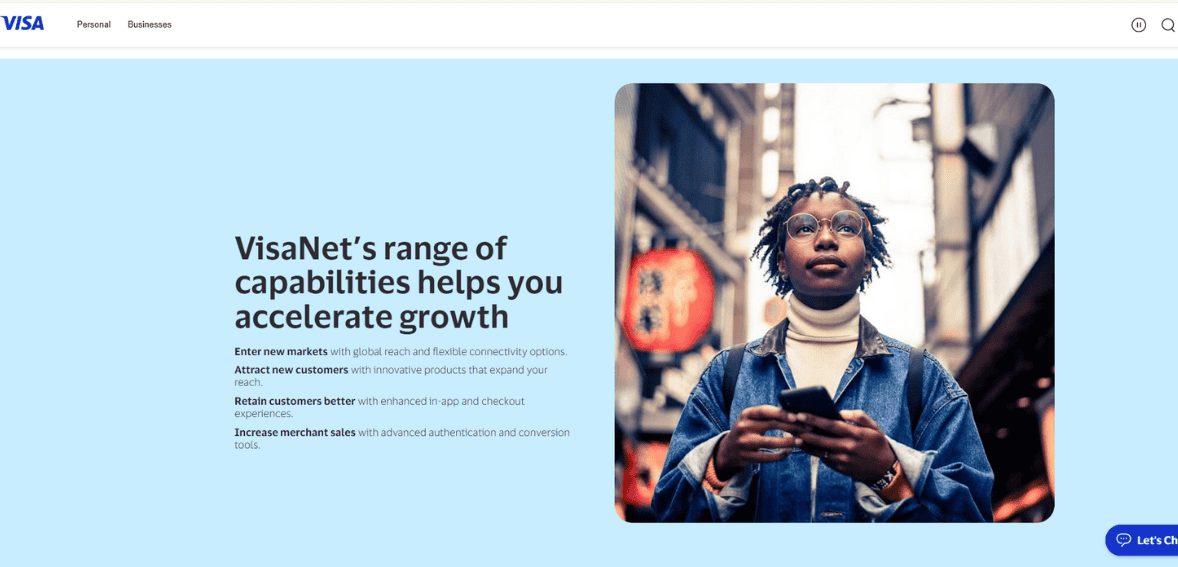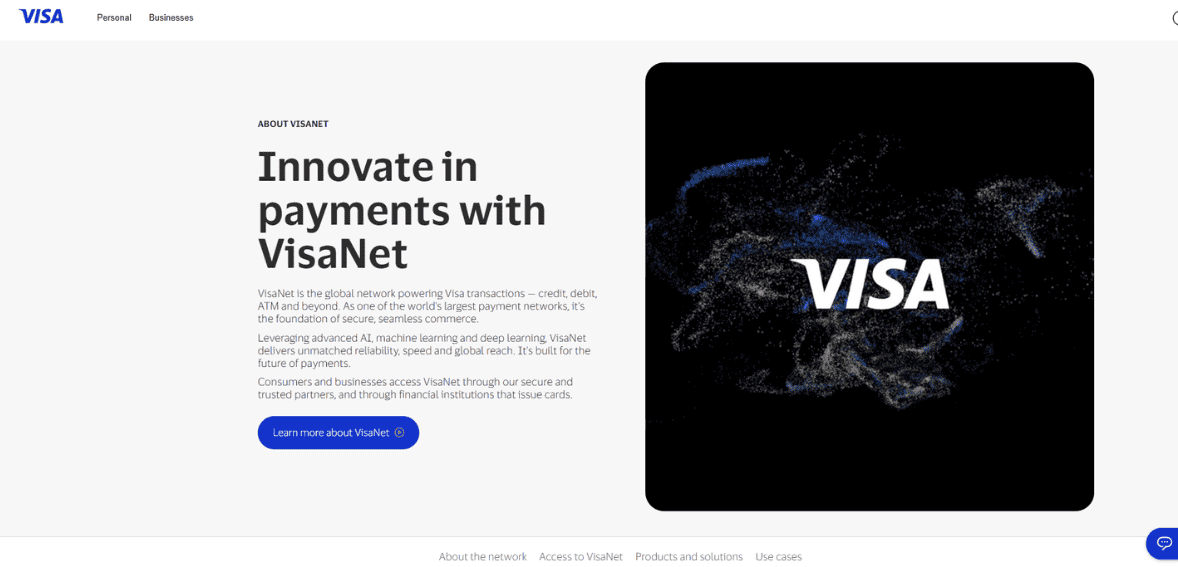VisaNet Review

VisaNet is the global transaction engine behind almost every Visa payment made worldwide. It’s the central hub that connects issuing banks, acquiring banks, merchants and cardholders, so transactions clear in seconds. Whether a customer swipes a card in-store, pays online or taps contactless, VisaNet routes, validates and completes the request. Its reputation for speed and reliability has made it one of the most trusted payment infrastructures. Lets read more about VisaNet Review.
Beyond moving money, VisaNet does multiple critical things in real time. It verifies cardholder credentials, applies fraud detection rules and enforces security compliance. It also handles complex cross-border functions like currency conversion and regional regulations. These capabilities make VisaNet not just a payment processor but a fundamental enabler of global commerce.
Despite being efficient, VisaNet is not without controversy. Merchants pay transaction fees and some argue that relying on one of the world’s largest private payment systems creates concentration risks. But VisaNet has become synonymous with reliability, balancing innovation with scale to process billions of transactions daily. By being the invisible bridge between merchants and consumers, VisaNet influences how money moves across industries and economies, how billions interact with payments every day.
History and Evolution of VisaNet | VisaNet Review
VisaNet’s history is tied to the rise of modern electronic payments. Its foundations were laid in the late 1970s when Visa started digitizing manual, paper-based processes. As card usage grew, Visa realised the need for a unified system to manage authorisations, settlements and clearing on a global scale. In 1977, VisaNet was launched, one of the first large-scale networks to deliver electronic transaction processing.
The system has evolved continuously. In the 1990s, the growth of cross-border commerce required broader currency and regulatory support. In the early 2000s, e-commerce brought new challenges, so VisaNet built solutions for card-not-present transactions. With mobile and contactless payments emerging in the 2010s, the network expanded to handle higher volumes with minimal latency.
Today, VisaNet is one of the largest and most advanced payment networks, processing tens of thousands of transactions per second. It uses AI, machine learning and advanced analytics to enhance fraud detection and efficiency. But its layered infrastructure needs to be updated constantly to keep up with the fast-paced fintech landscape. Its ability to adapt over decades shows its resilience and long-term relevance.
Global Reach and Transaction Volume
VisaNet’s strength is its sheer scale. Operating in over 200 countries and territories and supporting more than 160 currencies, it lets consumers and businesses transact almost anywhere in the world. It processes billions of transactions every year across retail, e-commerce, travel and services, that’s trillions of dollars in payment volume.
That scale is a reflection of Visa’s dominance and the trust of banks, merchants and consumers. VisaNet’s ability to handle peak surges – holiday seasons or global shopping events – without disruption is critical to global commerce. But with that dominance comes scrutiny. Critics argue that Visa’s market share concentrates too much power in one network, limiting competition and diversity in payments. Even so, VisaNet is essential to commerce, offers unparalleled reach and reliability and is the gatekeeper of the financial system.

Core Infrastructure and Technology Backbone
VisaNet is engineered for speed, scalability and resilience. Multiple globally distributed data centers ensure redundancy and near 100% uptime, so authorizations and settlements happen in real time. Consumers get seamless transactions, merchants and banks get uninterrupted payment flows.
Security is embedded at every level. VisaNet uses encryption, tokenization and secure protocols to protect sensitive data. AI and machine learning are used to analyze transaction flows, detect anomalies and flag fraud in real time. Scalability is a core focus, with Visa investing in cloud and software defined networking to handle the growing global demand.
Running such a complex infrastructure requires massive resources and investment in hardware, cybersecurity and compliance. Some say this complexity makes Visa slower to adapt compared to leaner fintech startups. But its technology backbone is one of the most robust in financial services.
Payment Processing Capabilities
VisaNet’s main job is to process payments reliably and securely across physical and digital channels. Whether a transaction is card-present in a store or card-not-present online, the system authorizes, clears and settles payments. It’s flexible beyond traditional retail, supporting recurring billing cycles, subscription based business models and mobile wallet transactions that mirror today’s consumer behaviour.
Card-present was where VisaNet built its reputation, with rapid authorisation and checkout experiences that reduced friction for merchants and customers. As commerce went online, the platform adapted by adding 3D Secure and real-time fraud screening. These features help strengthen online payment security for merchants and cardholders against cyber threats. VisaNet’s multi-currency functionality also allows businesses to accept payments from international customers with ease, global commerce and seamless experiences for travellers and cross-border shoppers.
But merchants complain about cost. Transaction fees, network charges and interchange rates are big for small businesses with tight margins. For many, these costs are a barrier to using VisaNet even though the infrastructure is reliable, global and has advanced risk management. Balancing cost with innovation is the challenge. While VisaNet evolves to meet market demands, making sure smaller merchants can use it without being burdened by fees is key to wider adoption and long term growth in the digital economy.

Security and Compliance Features
VisaNet’s security is one of its biggest and most trusted assets. At its heart is a multi-layered defence system that protects sensitive payment data at every stage of a transaction. Encryption protects information as it moves across networks, tokenization replaces card details with unique identifiers to reduce data exposure and real-time fraud detection uses machine learning and behavioural analytics to catch suspicious activity before it gets out of hand. For online and mobile transactions, biometric verification and multifactor authentication add extra security and consumer confidence.
Equally important, it meets global regulatory standards including the PCI DSS. By following these frameworks and continuously updating its security protocols, the network stays compliant and ahead of the threats. For banks and merchants, this means a trusted foundation for regulatory confidence and consumer trust.
But with size and fame comes being a bigger target for cybercriminals. As threats get more sophisticated, continuous investment in advanced defences is essential to stay resilient. Fintechs can roll out new security innovations quickly but VisaNet has been processing billions of transactions for years and is proven to be reliable. The combination of established trust, global compliance and ongoing innovation means VisaNet is the cornerstone of secure digital commerce in a complex cyber world.
Integration with Financial Institutions and Merchants
It integrates seamlessly with a vast ecosystem of banks, processors, and merchants. Issuing banks rely on it for authorizations, acquiring banks use it for settlement, and merchants benefit from its universal acceptance. Integration typically occurs via payment gateways and POS systems, minimizing technical barriers for adoption.
Specialized services, such as recurring billing and detailed reporting, add value for merchants seeking predictable cash flow and insights into consumer activity. For global corporations, VisaNet’s reach is indispensable. Yet costs and technical requirements can be obstacles for smaller businesses. Fees and integration expenses often weigh heavily on those operating with limited margins, restricting access despite the network’s advantages.
Real-Time Processing and Speed
VisaNet is renowned for its processing speed, typically authorizing payments within seconds; even during peak shopping periods. Its global data centers and optimized routing protocols allow the system to process thousands of transactions per second with minimal latency. For merchants, this means steady cash flow and reliable settlement. For consumers, it delivers seamless checkout experiences. Although rare, outages reveal the risks of concentrating so much infrastructure in one system. Still, VisaNet’s performance record sets a benchmark few competitors can match.
Support for Emerging Payment Methods
It has consistently adapted to evolving payment trends. Contactless transactions, digital wallets, and QR code-based systems are all supported, making the network compatible with a wide array of consumer preferences. Post-pandemic, contactless and wallet-based transactions have grown significantly, with VisaNet scaling to meet demand.
In developing regions, support for QR payments reflects VisaNet’s inclusive approach. However, competition from local platforms like UPI in India or UnionPay in China highlights the challenges of maintaining global dominance where regional systems thrive. Still, its ability to integrate emerging methods while preserving security is a strategic advantage.
Analytics, Reporting, and Insights
VisaNet extends beyond transaction processing by offering robust analytics and reporting tools. Banks and merchants use these insights to identify consumer trends, monitor performance, and manage fraud risks. For businesses, these tools help tailor marketing strategies, refine operations, and track settlements.
Yet accessibility varies. Larger organizations are best positioned to leverage advanced analytics, while smaller merchants often lack resources to maximize these capabilities. Despite this limitation, VisaNet’s role as both processor and intelligence provider reinforces its centrality to financial ecosystems.
Reliability, Uptime, and Performance
VisaNet is widely respected for its reliability, consistently maintaining uptime above industry averages. Its global redundancy and disaster recovery measures ensure transactions flow smoothly even during regional disruptions. For businesses, reliability translates to trust and stable revenue. While outages occasionally occur, their rarity underscores VisaNet’s resilience. Its long-standing performance record remains one of its most reassuring qualities for stakeholders worldwide.
Comparison with Competitors
VisaNet competes with Mastercard, American Express, and Discover. Mastercard is its closest rival, offering comparable speed and security, though Visa often holds larger market share. American Express integrates issuing and network roles, giving it tighter control but limiting acceptance. Discover, while functional, operates at a smaller scale.
Where competitors may excel in niche innovation, VisaNet’s unmatched scale and global reach keep it ahead. The competition forces VisaNet to continue evolving while maintaining its position as the payments benchmark.
Challenges and Limitations
Despite its dominance, VisaNet faces challenges. High transaction costs remain a barrier for small businesses, who often pass fees to consumers. Its centralized structure, while controlled, increases systemic risk during outages. Growing competition from fintech startups and regional systems also pressures VisaNet to innovate faster.
Regulatory scrutiny is intensifying, with governments demanding transparency around fees and operations. It must balance compliance, affordability, and innovation to sustain its role in the global economy.
Future Outlook
VisaNet’s future will be shaped by technology adoption and consumer behavior. Areas like real-time payments, blockchain integration, and biometric security present opportunities for innovation. Cross-border e-commerce growth further enhances VisaNet’s importance, though competition from regional systems will intensify.
Sustainability initiatives, such as energy-efficient data centers, are likely to feature in its long-term strategy. The challenge will be maintaining global reliability while adapting at the speed of fintech disruptors. Its ability to balance scale with agility will define its relevance in the next decade.
Conclusion
VisaNet is one of the most significant achievements in modern financial infrastructure. From its launch in 1977 to its role as the backbone of global payments today, it has consistently evolved with technology and consumer needs. Its speed, scale, and security have made it indispensable, though high fees and regulatory challenges highlight its limitations. For consumers, it means seamless transactions. For businesses, it offers global reach with associated costs. For regulators, it remains an entity under close watch. Despite imperfections, VisaNet continues to be the foundation for digital commerce worldwide, shaping how money moves across industries and economies.
FAQs
Q1: What makes VisaNet different from other payment networks?
It stands out for its massive scale, global acceptance, and ability to process thousands of transactions per second. While Mastercard and Amex offer similar services, VisaNet’s universal reach gives it an edge.
Q2: Is VisaNet secure for handling sensitive payment data?
Yes. it relies on encryption, tokenization, fraud detection, and compliance with PCI DSS to secure sensitive information, making it one of the most trusted networks.
Q3: Who benefits most from VisaNet?
Multiple stakeholders benefit: consumers enjoy convenience, merchants gain global access, and banks rely on its secure infrastructure. However, smaller merchants often struggle with costs, even as they benefit from its reliability.





